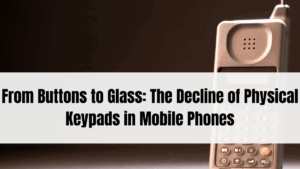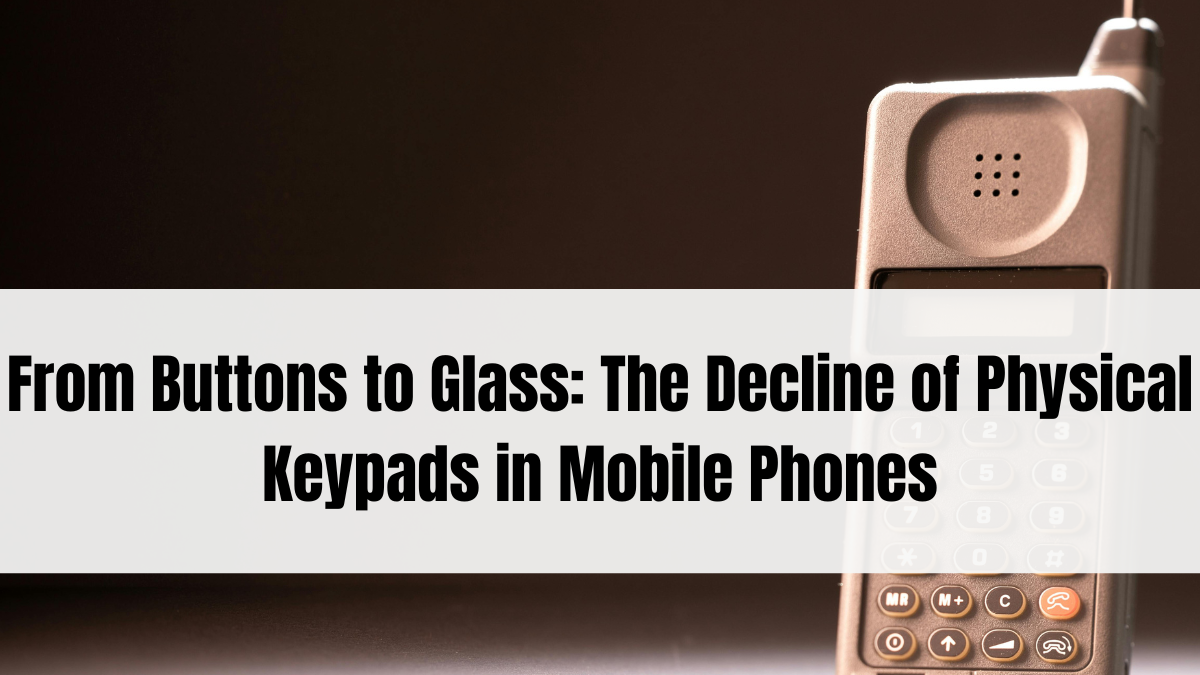Before the sleek glass rectangles of today, physical keypads in phones were a standard. Every button had a purpose, and muscle memory played a role in typing out SMS messages on T9 keyboards. Popular models from Nokia, BlackBerry, and Motorola relied on tactile feedback, giving users a satisfying click with every press. The design of phones was largely influenced by these keypads — either numeric or QWERTY-based.

The Shift in Mobile Design Philosophy
As smartphones evolved, screen size became the new priority. In the late 2000s, touchscreen technology matured enough to rival the functionality of physical keys. Apple’s introduction of the iPhone in 2007 marked a revolutionary turn. The focus shifted to full-screen interaction and software-driven input. This evolution made it clear: physical keypads in phones were becoming obsolete.
Why Touchscreens Took Over
Touchscreens offered flexibility and more real estate for app-based interaction. With them, manufacturers could offer larger displays without increasing phone size. Virtual keyboards could adapt to different languages, input types, and user preferences—something physical keypads couldn’t achieve.
Key Advantages of Touchscreens Over Physical Keypads:
-
Seamless browsing, gaming, and media consumption
-
Easier integration of gestures like swipe and pinch
-
Dynamic keyboard layouts
-
Space efficiency in phone design
What Users Gained & Lost
The transition to touch-based phones came with a mixed bag. While users gained multi-functionality, speed, and dynamic input, they lost the tactile satisfaction and precision of physical keypads. Power users of BlackBerry, for instance, often resisted the change for years due to the keyboard’s unmatched typing experience.
Here’s a comparative table:
| Feature | Physical Keypads | Touchscreens |
|---|---|---|
| Tactile Feedback | Strong | Minimal or Haptic-based |
| Screen Real Estate | Limited | Maximized |
| Typing Accuracy | High for some users | Varies by experience |
| Gesture Control | Not possible | Fully supported |
| App Flexibility | Limited | Extensive |
Design Trends That Accelerated the Fall
With every new generation of smartphones, slim designs, edge-to-edge displays, and in-display sensors became the norm. The aesthetic appeal of minimalist design became a key selling point, pushing out the clunky form factor of keypad devices.
Popular operating systems like Android and iOS also supported virtual keyboards with predictive text and swiping gestures, further reducing the need for physical keys.
Are Physical Keypads Gone for Good?
While rare, physical keypads in phones still exist in niche markets. Some rugged phones and specialty devices retain them for reliability and durability. However, they’ve largely vanished from the mainstream, becoming a nostalgic reminder of early mobile tech.
FAQs
Why did physical keypads in phones disappear?
Touchscreens offered better usability, larger display area, and flexibility, which made physical keypads redundant in modern smartphone designs.
Which was the last popular phone with a physical keypad?
BlackBerry KEY2, released in 2018, was among the last notable devices featuring a physical QWERTY keyboard.
Are there still phones with physical keypads?
Yes, but they are mostly found in rugged phones, senior-use models, or retro-inspired devices, not mainstream smartphones.
Was typing on physical keypads faster?
For experienced users, yes. Many found tactile keys quicker and more accurate, especially with T9 or QWERTY layouts.
Can I still buy phones with physical keypads?
Yes, basic feature phones with keypads are available from brands like Nokia, especially in developing markets.
Click here to know more.
